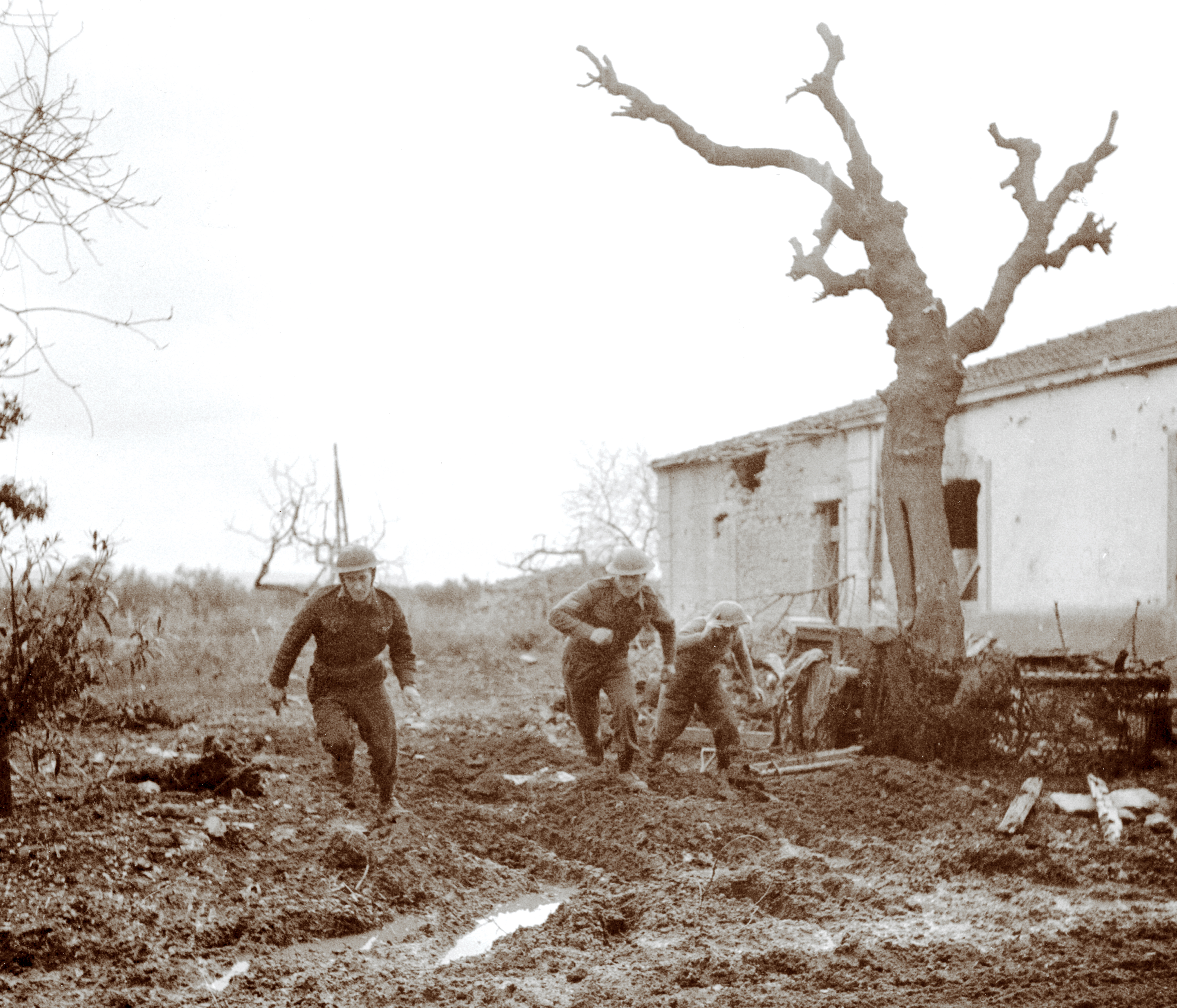
The Germans were dug in along the Moro River south of Ortona. On Dec. 4, 1943, the Allies—the Canadian 2nd Infantry Brigade, British, Indian and New Zealand troops—attacked. It would take two days of the bloody and exhausting 10-day battle just to cross the river.
The Royal Canadian Regiment and the Hastings and Prince Edward Regiment forced their way across on Dec. 6, establishing a bridgehead at San Leonardo.
The following week, the Royal 22nd Regiment, tanks of the Ontario Regiment, the 48th Highlanders and the Royal Canadian Regiment finally blasted the Germans out of a heavily defended deep gully near Casa Berardi.
The 1st Canadian Infantry Division was poised for the final assault on Ortona by Dec. 11.
“We crossed the [Moro] River and we went up the hills, and we turned to the right, which was going east, toward the city of Ortona, which is on the east coast,” said George Burrows of Chatham, Ont., one of a mortar crew providing a rolling barrage.
On about Dec. 15, he learned from a major that “of 756 men who’d landed in Sicily on July 10, 1943, there were exactly 34 of us left. And of the 34, nine of those were officers, the other nine were other ranks which would be sergeants, corporals and a few privates. Most of those would be coming from Headquarters Company, which was not a fighting company, it was a support company. But I would be one of maybe six or seven or eight [combat troops who had]…survived that at that point in time,” Burrows said in a Memory Project interview.
And ahead was the Battle of Ortona, eight days of fierce house-to-house fighting that would cost more lives. By Dec. 28, when the Germans withdrew, the 1st Canadian Division had suffered 502 deaths.
Advertisement













